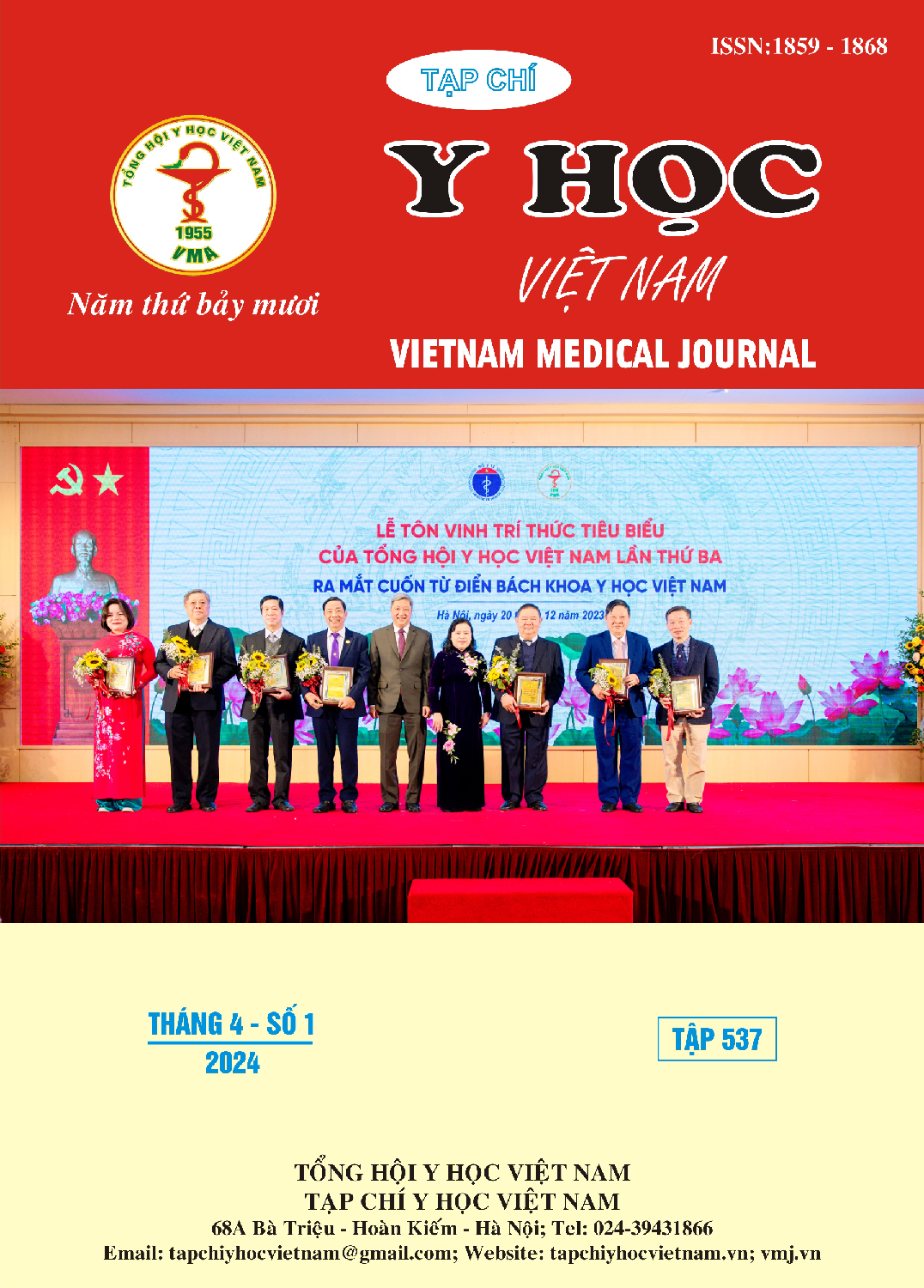ASSESSMENT OF THE CORRELATION BETWEEN SpO2/FiO2 AND PaO2/FiO2 IN PATIENTS WITH ARDS
Main Article Content
Abstract
Objective: To study about the correlation between SpO2/FiO2 (S/F) and PaO2/FiO2 (P/F) in patients with ARDS and the factors that affected to this correlation. Methods: In this prospective observational study, we enrolled 90 patients with ARDS who were in Surgical intensive care unit (SICU) at Vietnam – Germany Friendship Hospital. Corresponding measurements of SpO2 (values ≤ 97%) and PaO2 measured through arterial blood sampling were compared to determine the relationship between S/F and P/F. S/F threshold values correlating with P/F ratios of 100, 200 and 300 were determined. Results: In the derivation data set (336 measurements), the relationship between S/F and P/F was described by the following equation: S/F = 62,8 + 0,87 × (P/F) [p<0,001; r = 0,931). The S/F ratio threshold values of 138, 236 and 320 resulted in 96,6% sensitivity with 95,4% specificity; 88,7% sensitivity with 96,2% specificity and 86,4% sensitivity with 93,1% specificity respectively, for P/F ratios of 100, 200 and 300. Factors that may affected this relationship include: ARDS severity, PEEP level, vasoactive doses and causes of ARDS. Conclusions: S/F ratios correlate with P/F ratios. S/F ratios of 138; 236 and 320 correlate with P/F ratios of 100; 200 and 300, respectively, for diagnosing and following up patients with ARDS.
Article Details
Keywords
ARDS; definition; SpO2/FiO2 ratio; PaO2/FiO2 ratio.
References
2. Lazzeri C, Peris A. The Kigali modification of the berlin definition: a new epidemiological tool for ARDS? J Thorac Dis. 2016;8(6): E443-445. doi:10. 21037/jtd.2016.03.84
3. Rice TW, Wheeler AP, Bernard GR, Hayden DL, Schoenfeld DA, Ware LB. Comparison of the Spo2/Fio2 Ratio and the Pao2/Fio2 Ratio in Patients With Acute Lung Injury or ARDS. Chest. 2007;132(2):410-417. doi:10.1378/chest.07-0617
4. Pandharipande PP, Shintani AK, Hagerman HE, et al. Derivation and validation of SpO2/FiO2 ratio to impute for PaO2/FiO2 ratio in the respiratory component of the Sequential Organ Failure Assessment (SOFA) Score. Crit Care Med. 2009; 37(4): 1317-1321. doi: 10.1097/CCM. 0b013e31819cefa9
5. Ortiz G, Bastidas A, Garay-Fernández M, et al. Correlation and validity of imputed PaO2/FiO2 and SpO2/FiO2 in patients with invasive mechanical ventilation at 2600m above sea level. Med Intensiva. 2022;46(9):501-507. doi:10.1016/ j.medin.2021.05.001
6. Perkins GD, McAuley DF, Giles S, Routledge H, Gao F. Do changes in pulse oximeter oxygen saturation predict equivalent changes in arterial oxygen saturation? Crit Care. 2003;7(4):R67-R71.
7. Ferguson ND, Fan E, Camporota L, et al. The Berlin definition of ARDS: an expanded rationale, justification, and supplementary material. Intensive Care Med. 2012;38(10):1573-1582. doi: 10.1007/s00134-012-2682-1
8. Bass CM, Sajed DR, Adedipe AA, West TE. Pulmonary ultrasound and pulse oximetry versus chest radiography and arterial blood gas analysis for the diagnosis of acute respiratory distress syndrome: a pilot study. Crit Care. 2015;19(1): 282. doi:10.1186/s13054-015-0995-5
9. Wick KD, Matthay MA, Ware LB. Pulse oximetry for the diagnosis and management of acute respiratory distress syndrome. Lancet Respir Med. Published online August 29, 2022. doi: 10.1016/S2213-2600(22)00058-3


